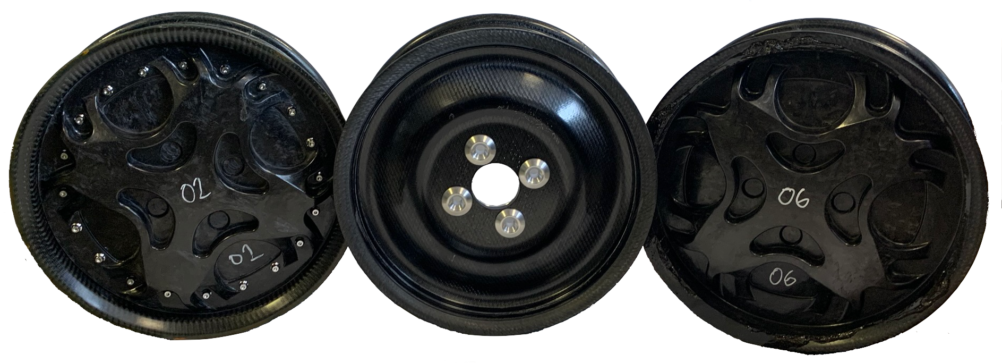C2I 2020: Automotive shortlist
Innovations in lightweighting, connectivity and electrification dominated this year’s automotive category. Andrew wade reports.

Category: Automotive
Project: ACRIM-Wheel (All Composite Reduced Inertia Modular Wheels)
Partners: Carbon ThreeSixty with Far-UK and Bitrez
ACRIM-Wheel was an R&D proof-of-concept project to produce the world’s first commercially viable, all-composite, modular wheel system. Targeted at niche and electric vehicle applications, it sought to demonstrate the durability of composite wheels and quantify improvements made to vehicle efficiency from the lightweighting effects of composites.

Existing composite wheels are typically manufactured in single cavity resin transfer moulding processes where liquid resin is injected into a tool containing a constrained dry fibre preform. Process equipment is expensive and multipart tooling assemblies are highly complicated. The primary innovation within ACRIM-Wheel was separating the wheel tooling into two elements, the barrel and the centre. This innovative approach enabled a single barrel tool to be used with multiple centre options.
Rather than focusing on high-end sports cars or performance vehicles – the traditional market for composite lightweighting – ACRIM-Wheel was developed with high-frequency stop/start vehicles and city driving in mind. This type of transport is influenced by rotational inertia more than vehicles that move at steady speeds for prolonged periods of time.
Register now to continue reading
Thanks for visiting The Engineer. You’ve now reached your monthly limit of premium content. Register for free to unlock unlimited access to all of our premium content, as well as the latest technology news, industry opinion and special reports.
Benefits of registering
-
In-depth insights and coverage of key emerging trends
-
Unrestricted access to special reports throughout the year
-
Daily technology news delivered straight to your inbox











Water Sector Talent Exodus Could Cripple The Sector
Well let´s do a little experiment. My last (10.4.25) half-yearly water/waste water bill from Severn Trent was £98.29. How much does not-for-profit Dŵr...